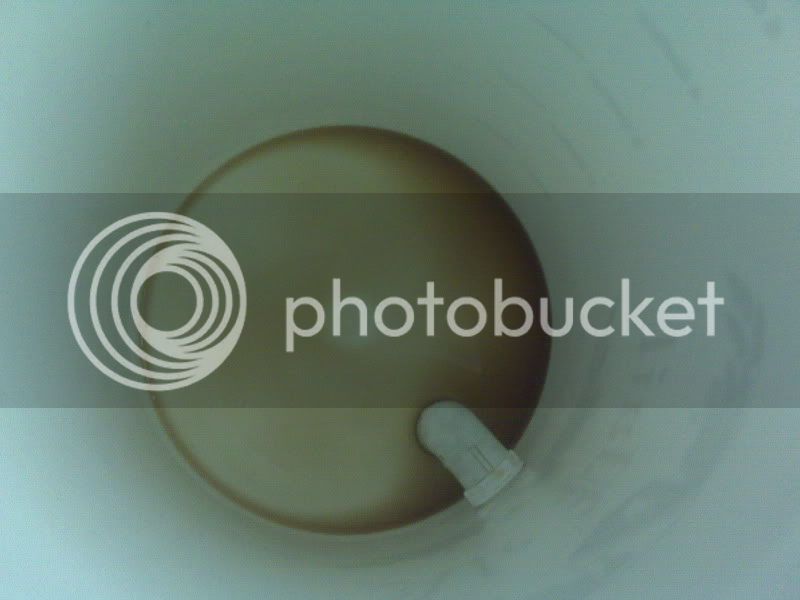"Did you end up moving the fermenter for your mocha java? Because you could have very easily roused up the yeast cake at the bottom"
Yea, bottle over the dishwasher, but fermentor sat for a half hour while I did other prep for that reason. Just used to that 1/4 inch on the bottom of the secondary vs. the inch plus in the primary. I don't like to dump beer and the secondary method allows me an opportunity to get every drop of beer goodness I can.
Looking over my test bottles (clear bottles I sample a week, two weeks out) there is a significant amount of stuff on the bottom, compared to others. Now some of this could be the brew (mocha java stout with lactos added at bottling) batch and what it would do normally compared to the others I have put up. The others (Irish red, copper ale, cream stout, hex nut brown) have barely a trace of goodies on the bottom of the bottle. All taste very good, comperable to the brew pubs I've visited. This MJStout seems to have a considerable amount of bottom goodies in comparison.
While "I" know that can't hurt me and may actually be good for me, my guests who are offered it may feel differently.
It is still too early to tell as I just bottled last night. I'm sure it will pour clear and taste good, I may just have to not empty the bottle like I do with the others.
I may go back to using a secondary next batch for no other reason than dealing with the yeast cake at bottling. When I do that initial transfer to a secondary I "know" I'm going to transfer a certain amount of that yeast cake with it. The secondary then allows it to settle out so when I am getting ready to bottle, I'm not as worried about disturbing the yeast cake and kicking up a ton of stuff. So for me, it's probably a comfort zone thing. I'm sure either way the batches will condition just fine. I just feel it is easier to work around a 1/4 inch on the bottom than a 1 1/2 of jello pudding that occupies the primary. So it's comfort zone of the bottler and amount of stuff in the bottle for appearance sake. Neither have anything to do with the quality of the beer, but more to do with the perception of the bottler.
Hope that makes sense to you guys.



